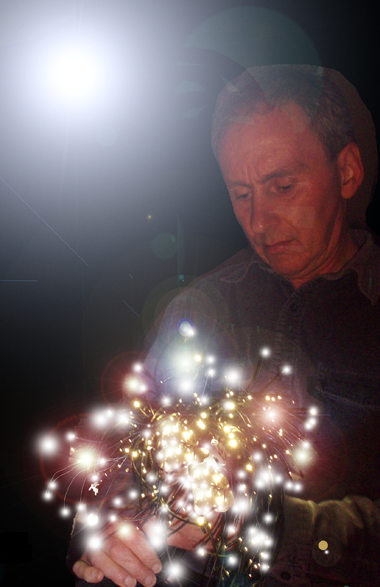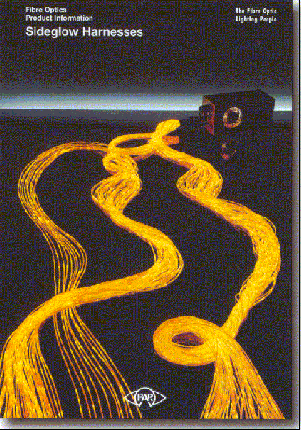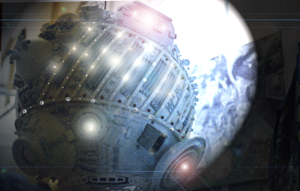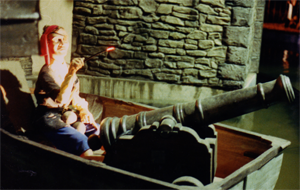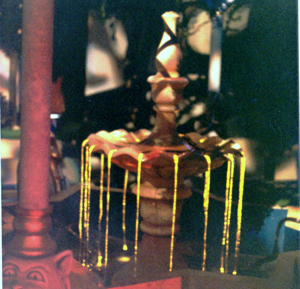Theatrical grade glass or plastic fibre optics: how to make some:
Take a thick cylinder about a meter long of optical quality glass ( or polymer) and coat it with a different kind of glass (or polymer) with different optical properties. Then heat it up and let it flow through a set of dies and sensors until it is a few microns thick and several miles long. Or better still, get someone ( like Par Opti or Universal Fibre Optics ) who has the equipment do it.
Then make bundles of say, 150 or more of these and coat each whole bundle in black or clear plastic. Its now known as a “tail” or “cable”. Take as many of these tails as you need, cut them to desired length (anywhere up to about 10 metres long or as short as you like) and bundle them all together with tape or heat shrink tubing at one end. This is now called a “Harness”
At each of the free ends, carefully strip the plastic for a few millimetres, dip in into resin, and crimp it into a thin brass tube. At the common end, strip each tail back a couple of centimetres and resin bond all the individual raw fibres together. Then carefully cut the end into a flat face and polish it dead flat with finer and finer grades of abrasive, finishing with talc, and eventually paper. Insert the whole lot into a piece of brass or other metal tubing and it is ready to go. The finished common end assembly is known as a 'ferrule' Offer the ferrule up to a light source and the light will appear like stars at the far end.
The light source can be virtually any suitable lamp: at the lower end of the scale, a 20 watt dicroic reflector lamp can be used or at the other end a high intensity discharge lamp. or anything in between. There might optionally be a flicker wheel or a colour wheel inserted between the lamp and the harness. The optical properties of the lamp used should be selected to cover the fibre bundle fairly evenly: this not only avoids hot spots and uneven bightnesses, but should also prevent heat from being concentrated in one place. The heat of the lamp can damage the fibres,especially plastic ones, so be careful to use a heat shield if necessary. |

